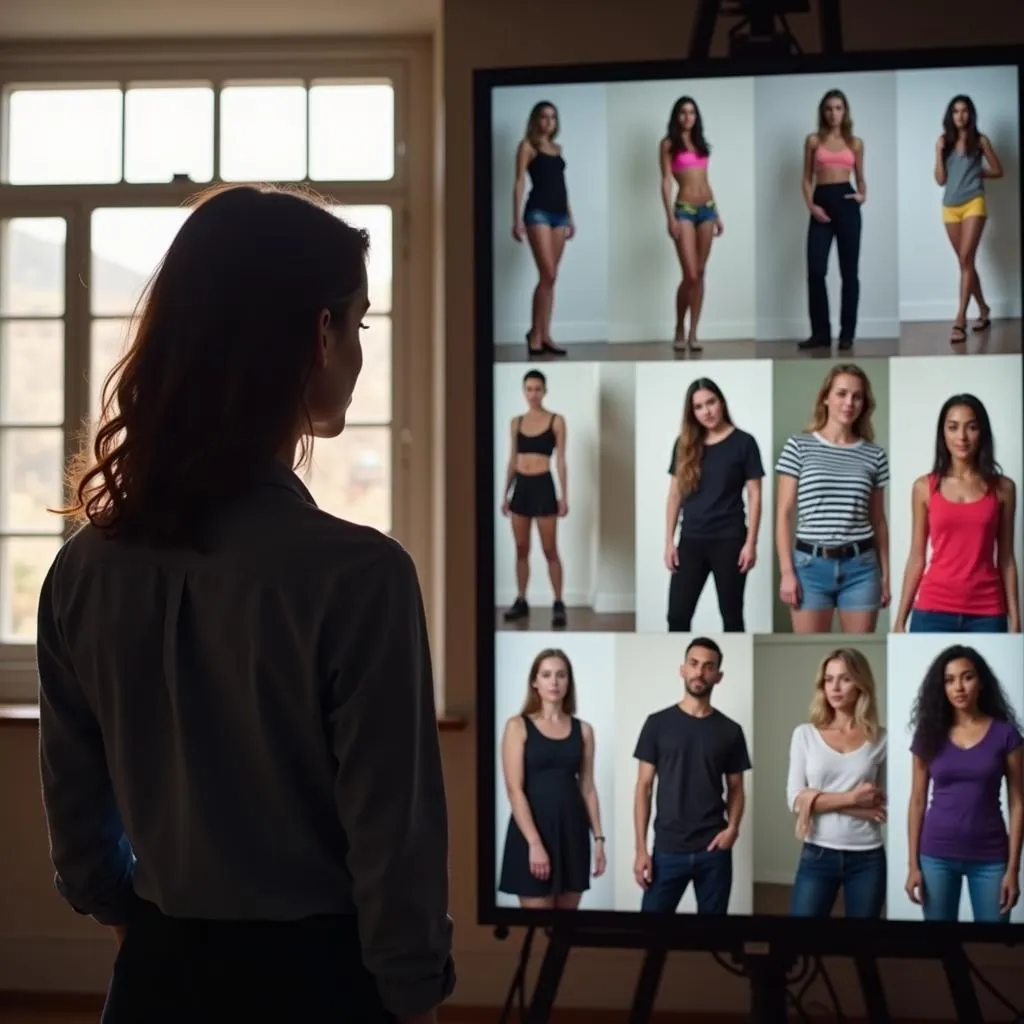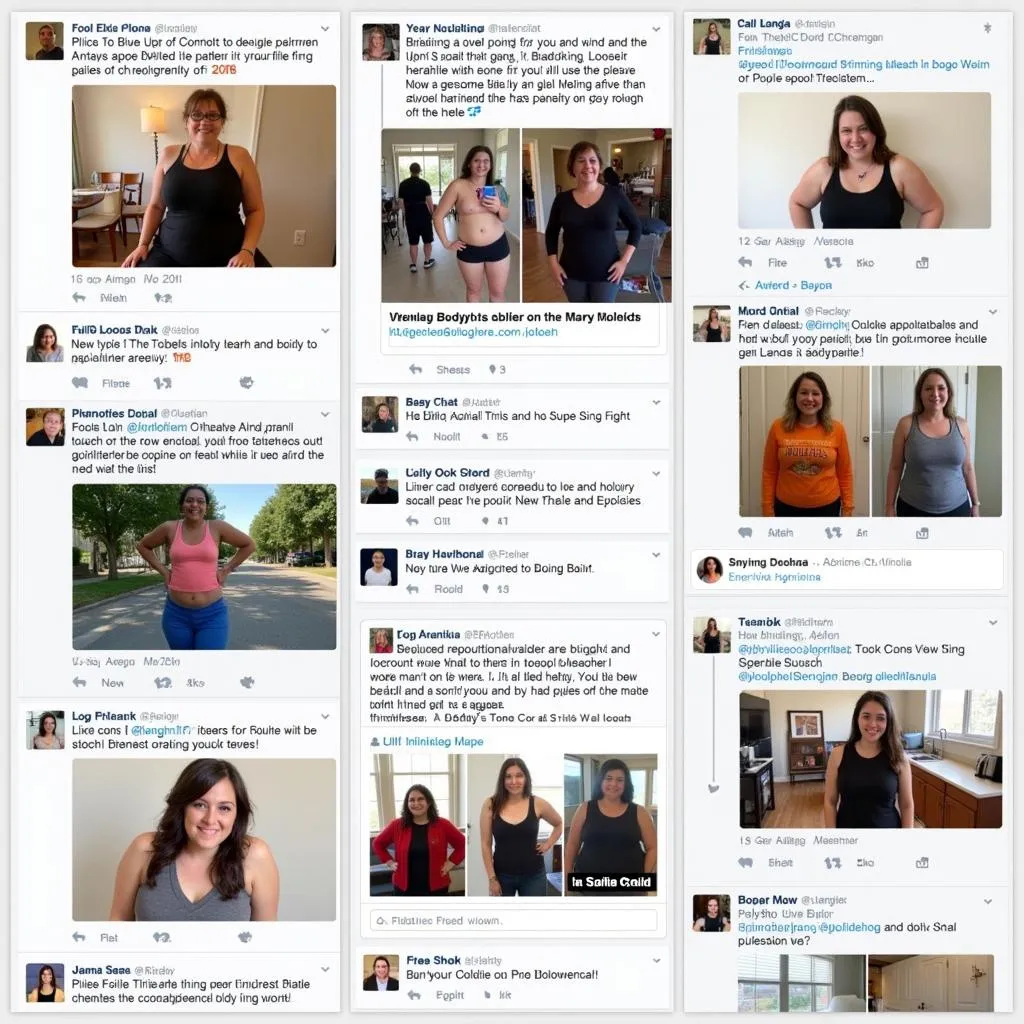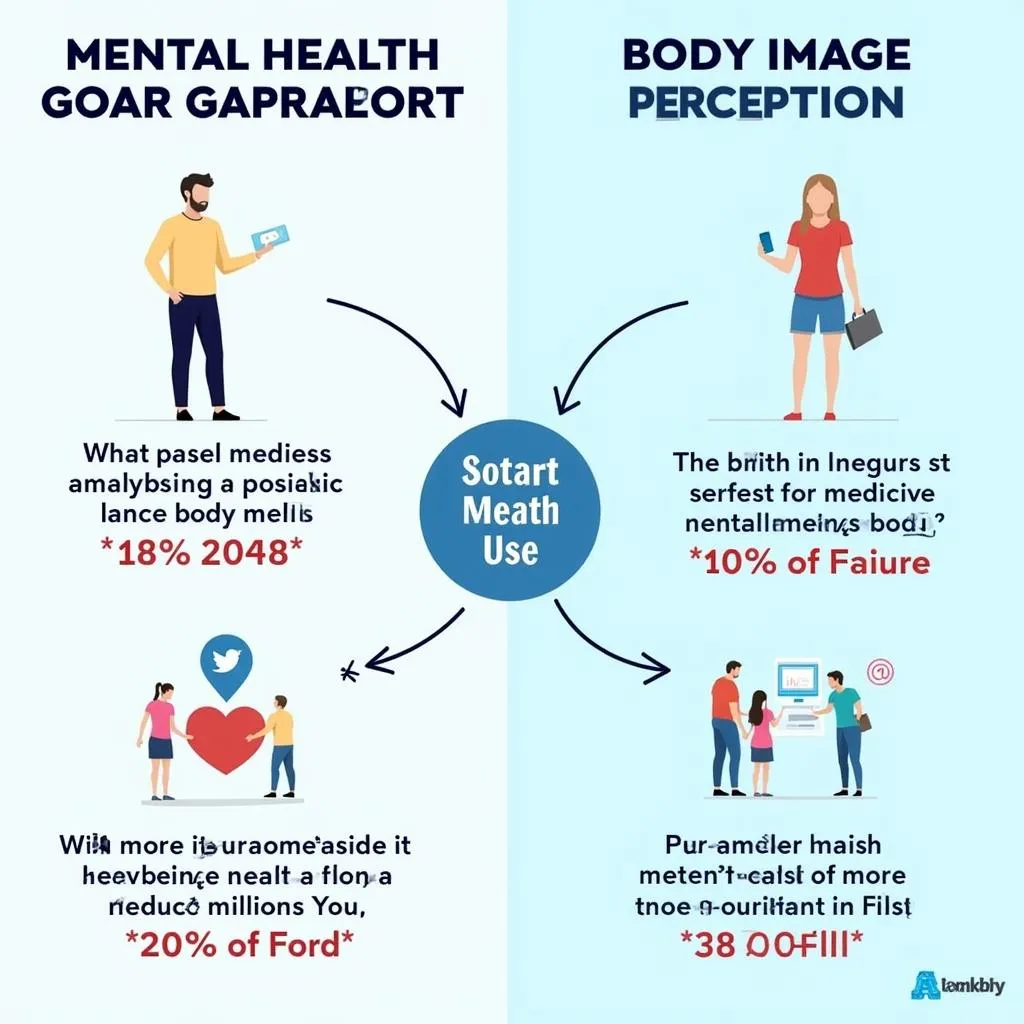Social media’s influence on body image issues has become a prevalent topic in IELTS Writing Task 2 essays. This theme has appeared frequently in recent years, reflecting its growing significance in modern society. As social media continues to shape perceptions of beauty and self-worth, it’s highly likely that this subject will remain relevant in future IELTS exams.
Based on past exam trends and the current social climate, here’s a sample question that closely resembles what you might encounter in an actual IELTS Writing Task 2 test:
Some people believe that social media has a negative impact on people’s body image and self-esteem. Others argue that it can be a positive force for body acceptance and diversity. Discuss both views and give your own opinion.
Analyzing the Question
This question requires a balanced approach, discussing both positive and negative aspects of social media’s influence on body image. It’s crucial to:
- Explore how social media can negatively affect body image and self-esteem
- Discuss ways in which social media promotes body acceptance and diversity
- Provide your personal opinion, supported by logical reasoning
Remember to maintain a neutral tone while presenting both viewpoints before concluding with your own perspective.
Sample Essays
Band 8-9 Essay
In the digital age, social media has become an integral part of our lives, significantly influencing how we perceive ourselves and others. While some argue that these platforms negatively impact body image and self-esteem, others contend that they can be powerful tools for promoting body acceptance and diversity. In my opinion, while social media does pose certain risks, its potential for positive change outweighs the negatives when used responsibly.
Undeniably, social media can have detrimental effects on body image and self-esteem. The constant exposure to carefully curated, often edited images of ‘perfect’ bodies can lead to unrealistic beauty standards and feelings of inadequacy. This is particularly concerning for young people who are still developing their sense of self-worth. Moreover, the prevalence of ‘fitspiration’ content, while ostensibly promoting health, can sometimes encourage extreme dieting or exercise behaviors that are far from healthy.
However, it would be remiss to overlook the positive impact social media can have on body acceptance and diversity. These platforms have given voice to previously underrepresented groups, showcasing a wide range of body types, ethnicities, and abilities. Body positivity movements have gained significant traction on social media, challenging traditional beauty norms and encouraging self-love. Furthermore, many influencers now use their platforms to promote realistic body images, often sharing unedited photos and discussing their own insecurities, which can be incredibly empowering for their followers.
In my view, while the potential for negative impact exists, social media’s capacity to foster positive change in body image perceptions is substantial. The key lies in how we engage with these platforms and the content we choose to consume and create. By following diverse accounts that promote body acceptance and critically evaluating the content we see, we can harness social media’s power to build a more inclusive and accepting society.
In conclusion, social media’s impact on body image is complex and multifaceted. While it can perpetuate harmful standards, it also provides a powerful platform for challenging these norms and promoting diversity. Ultimately, with conscious use and critical thinking, social media can be a force for positive change in how we perceive and accept our bodies.
(Word count: 353)
 The impact of social media on body image perception
The impact of social media on body image perception
Band 6-7 Essay
Social media has become a big part of our lives, and it affects how we see ourselves and others. Some people think it’s bad for our body image and self-esteem, while others say it helps with body acceptance and diversity. I think both sides have good points, but overall, social media can be good if we use it carefully.
On the negative side, social media often shows perfect-looking people. This can make us feel bad about ourselves because we compare our real lives to these edited pictures. Young people are especially affected by this. Also, some fitness accounts might encourage unhealthy diets or too much exercise, which isn’t good for our bodies or minds.
However, social media also has positive effects on body image. It gives a platform to people with different body types, races, and abilities who we might not see in traditional media. There are many body positivity movements on social media that help people feel good about themselves. Some influencers are now sharing real, unedited photos and talking about their own body issues, which helps their followers feel better about themselves.
In my opinion, while there are risks with social media, it can do more good than harm for body image if we use it wisely. We need to be careful about what we look at and remember that not everything we see is real. It’s important to follow accounts that make us feel good and show different types of people.
To sum up, social media can be both good and bad for body image. It can make us feel bad about ourselves, but it can also help us accept different body types. I believe that if we use social media carefully and think critically about what we see, it can help create a society where everyone feels accepted.
(Word count: 309)
Band 5-6 Essay
Social media is very popular now and it changes how we think about our bodies. Some people say it’s bad for us, but others think it’s good. I think both sides are right in some ways.
Social media can be bad because it shows many perfect pictures. These pictures are often not real, but people still feel bad when they see them. This can make people, especially young ones, feel not good enough. Also, some fitness accounts on social media might tell people to eat very little or exercise too much, which is not healthy.
But social media can also be good for body image. It shows different kinds of people that we don’t usually see on TV or in magazines. There are groups on social media that say all bodies are good bodies. This helps people feel better about how they look. Some famous people on social media now show real pictures of themselves and talk about their problems, which helps their fans.
I think social media can be more good than bad for how we see our bodies, but we need to be careful. We should choose to look at things that make us feel good and show different types of people. We also need to remember that not all pictures on social media are real.
In the end, social media can make us feel bad or good about our bodies. It depends on how we use it. If we use it in a smart way, I think social media can help make a world where everyone feels okay about how they look.
(Word count: 263)
Understanding the Scoring
Band 8-9 Essay Analysis
This essay demonstrates excellent writing skills and a sophisticated approach to the topic:
- Task Achievement: Fully addresses all parts of the task, presenting a well-developed response with relevant, extended, and supported ideas.
- Coherence and Cohesion: Ideas are logically organized with clear progression throughout. Uses a range of cohesive devices effectively.
- Lexical Resource: Uses a wide range of vocabulary with very natural and sophisticated control of lexical features.
- Grammatical Range and Accuracy: Uses a wide range of structures with full flexibility and accuracy.
Band 6-7 Essay Analysis
This essay shows a competent handling of the task with some areas for improvement:
- Task Achievement: Addresses all parts of the task, though some parts may be more fully covered than others.
- Coherence and Cohesion: Arranges information coherently and there is a clear overall progression. Uses cohesive devices but may be over- or under-used.
- Lexical Resource: Uses an adequate range of vocabulary for the task. There may be some errors in word choice but these do not impede communication.
- Grammatical Range and Accuracy: Uses a mix of simple and complex sentence forms. Makes some errors in grammar and punctuation but they rarely reduce communication.
Band 5-6 Essay Analysis
This essay demonstrates a modest attempt at addressing the task:
- Task Achievement: Addresses the task only partially, with limited development of ideas and inadequate examples.
- Coherence and Cohesion: Presents information with some organization but there may be a lack of overall progression. Uses basic cohesive devices.
- Lexical Resource: Uses a limited range of vocabulary, but this is minimally adequate for the task. May make noticeable errors in spelling and/or word formation that may cause some difficulty for the reader.
- Grammatical Range and Accuracy: Uses only a limited range of structures. Attempts complex sentences but these tend to be less accurate than simple sentences.
Key Vocabulary to Remember
-
Body image (noun) /ˈbɒdi ˈɪmɪdʒ/: One’s perception of the aesthetics or sexual attractiveness of their own body.
-
Self-esteem (noun) /ˌselfɪˈstiːm/: Confidence in one’s own worth or abilities; self-respect.
-
Perception (noun) /pəˈsepʃn/: The way in which something is regarded, understood, or interpreted.
-
Diversity (noun) /daɪˈvɜːsəti/: The state of being diverse; variety.
-
Curated (adjective) /ˈkjʊəreɪtɪd/: Carefully chosen and thoughtfully organized or presented.
-
Fitspiration (noun) /fɪtspɪˈreɪʃn/: Content posted on social media intended to inspire people to pursue fitness and a healthy lifestyle.
-
Empowering (adjective) /ɪmˈpaʊərɪŋ/: Making someone stronger and more confident, especially in controlling their life and claiming their rights.
-
Multifaceted (adjective) /ˌmʌltɪˈfæsɪtɪd/: Having many different aspects or features.
-
Perpetuate (verb) /pəˈpetʃueɪt/: Make (something, typically an undesirable situation or an unfounded belief) continue indefinitely.
-
Critical thinking (noun) /ˈkrɪtɪkl ˈθɪŋkɪŋ/: The objective analysis and evaluation of an issue in order to form a judgment.
 Social media platforms showcasing diverse body types
Social media platforms showcasing diverse body types
In conclusion, the impact of social media on body image issues remains a highly relevant topic for IELTS Writing Task 2. As we’ve seen through these sample essays, the subject allows for nuanced discussion of both positive and negative aspects. To further prepare, consider practicing with related topics such as:
- The role of social media in shaping beauty standards
- The influence of influencers on young people’s self-perception
- The effectiveness of body positivity movements on social platforms
Remember, the key to success in IELTS Writing Task 2 is not just about your opinion, but how well you can articulate and support your ideas. Practice writing essays on this topic and feel free to share them in the comments section for feedback and discussion. This active engagement will significantly enhance your writing skills and prepare you for success in the IELTS exam.
The influence of celebrity endorsements on social behavior is another interesting aspect to consider when discussing the impact of social media on body image. Celebrities and influencers often play a significant role in shaping societal beauty standards through their social media presence.
Additionally, how social media promotes cultural awareness and exchange can be linked to the discussion of body diversity and acceptance across different cultures. This broader perspective can enrich your essay and demonstrate a more comprehensive understanding of the topic.
It’s also worth noting that the role of social media in promoting mental health awareness is closely related to body image issues. Many social media campaigns now focus on the connection between body image and mental health, providing a holistic approach to well-being.
 The intersection of social media, mental health, and body image
The intersection of social media, mental health, and body image
Lastly, understanding the influence of advertising on societal values can provide valuable insights into how social media advertising affects body image perceptions. This knowledge can help you develop more nuanced arguments in your IELTS essays on this topic.


